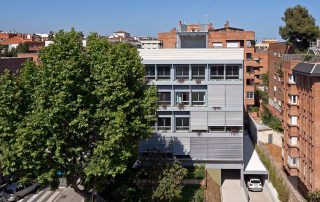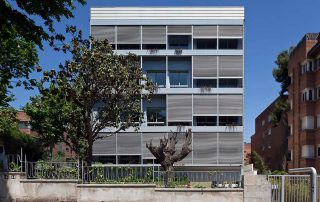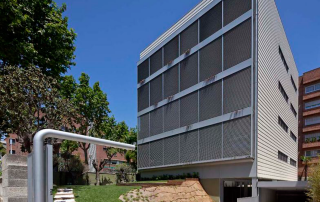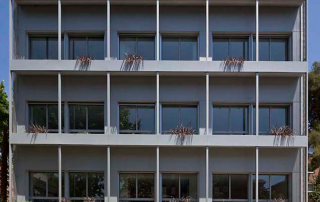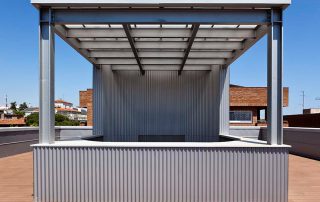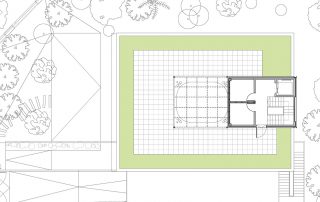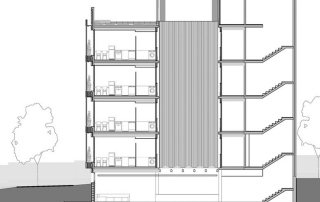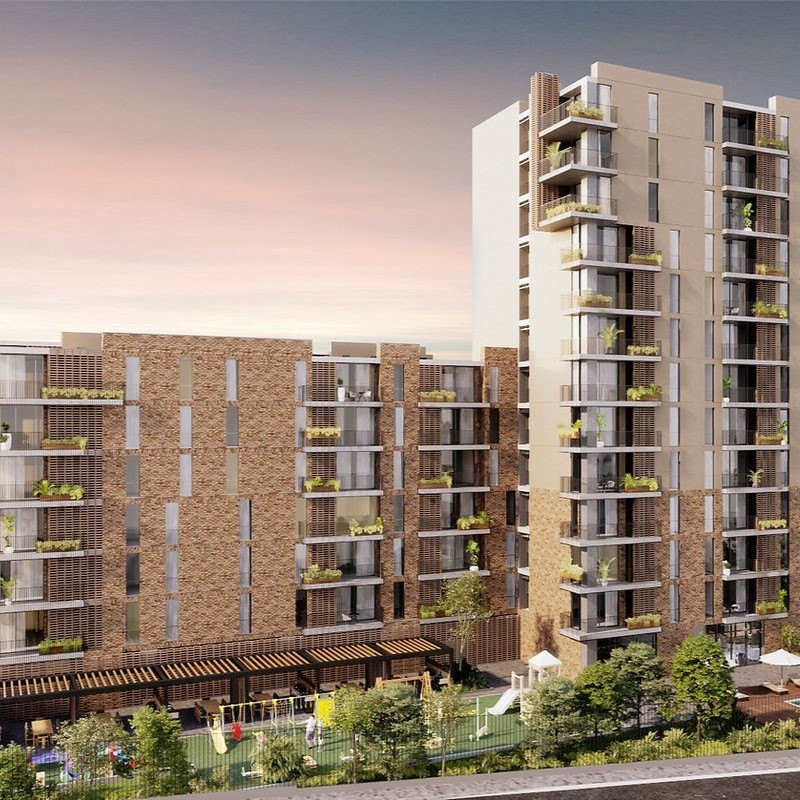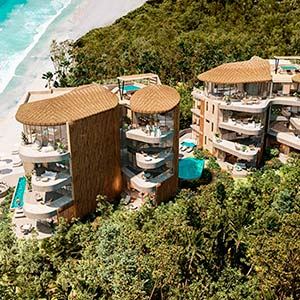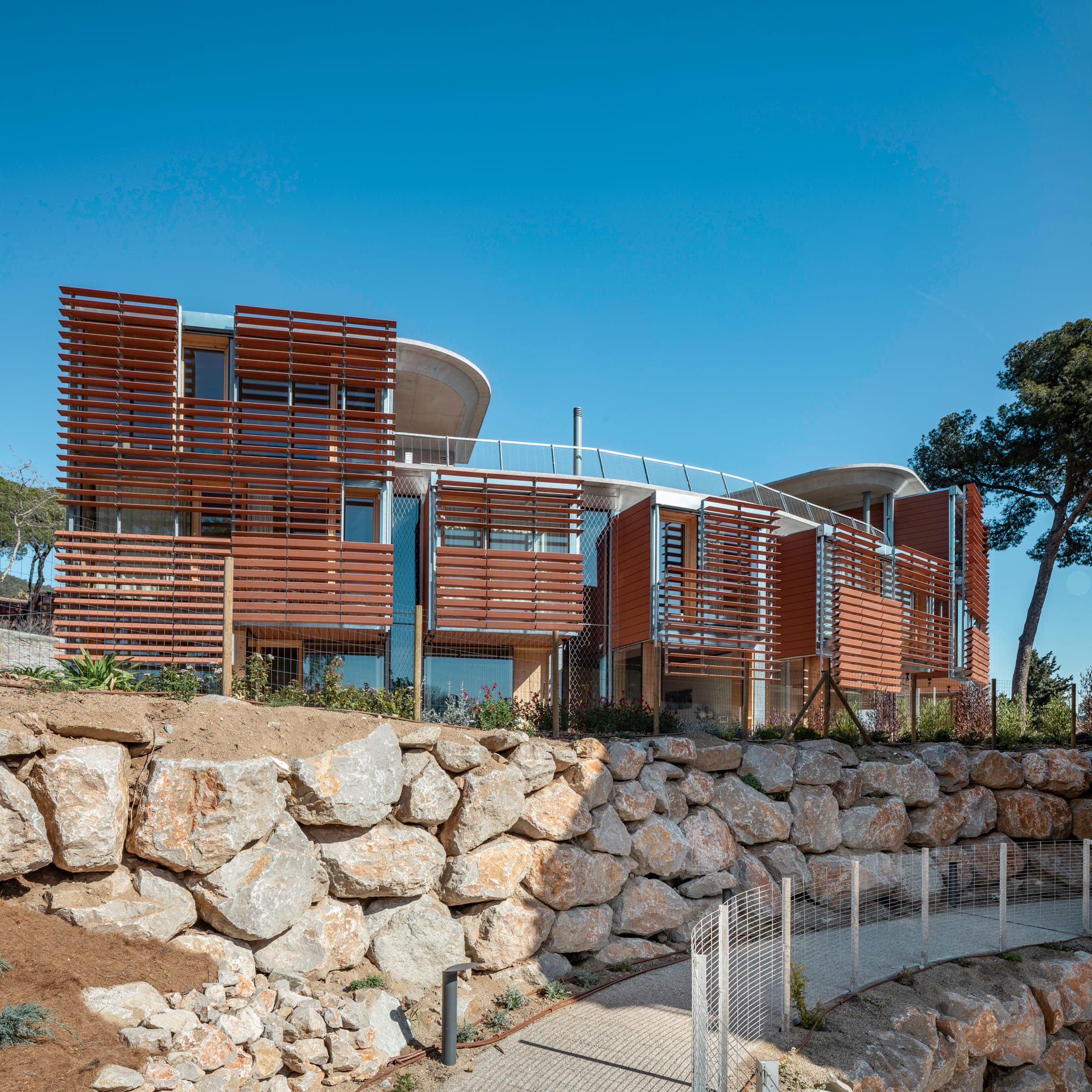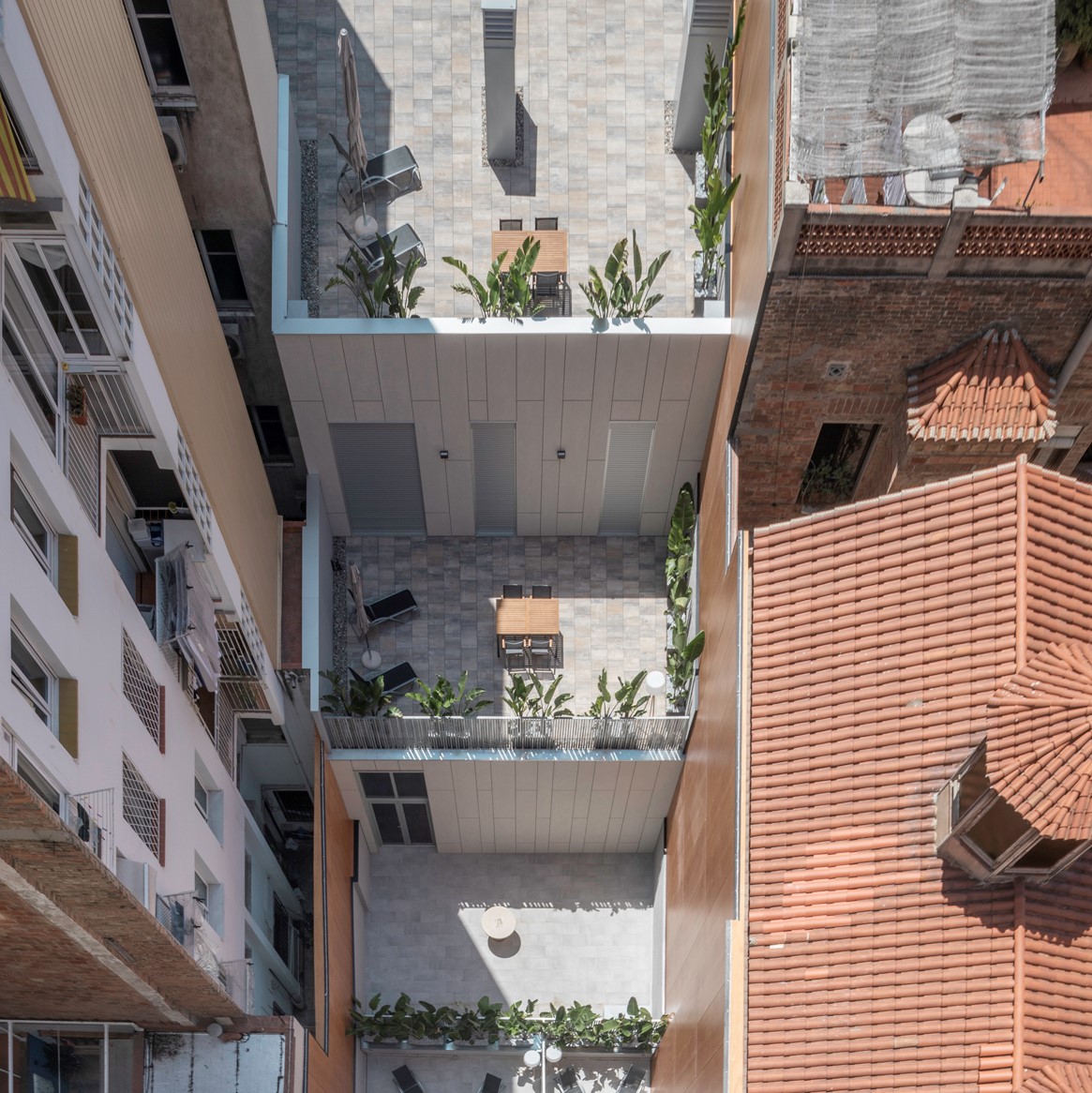High energy efficiency in Pau Alcover
Barcelona, Spain
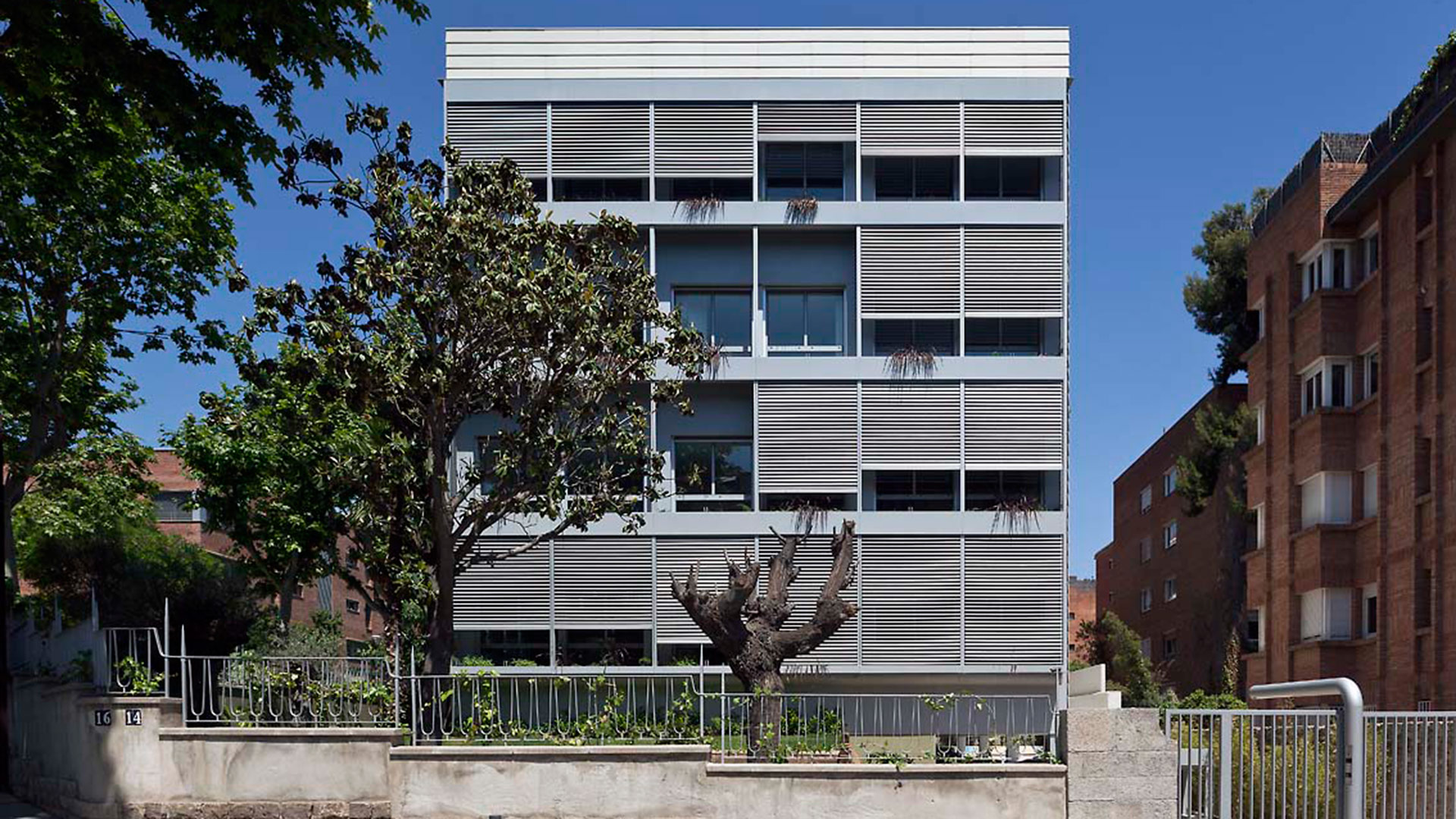
Project details
Year: 2014
Surface: 1.770 m²
Budget: 2.198.673€
Typology: Residential
Photography: WENZEL – Josep Mª. Molinos
More information
– Industrialized construction with mixed systems.
– Project developed according to the GREEN evaluation criteria (GBCe).
Situation
General information
The building is part of a private housing complex promotion that seeks both quality of its space (natural lighting, views, vegetation, and acoustics), as well as efficient energy consumption (thus financially efficient) during its use. The building is located at the intersection between the streets of Pau Alcover and Angli, in the Barcelona neighborhood of Bonanova. The promoter is GC2 Energy Services.
The starting premise for the design of this 4 story housing building was to achieve an energetic balance with zero tendency through diverse active and passive strategies. The initial selected criteria was focused on reducing the energetic demand, minimizing energy consumption, and further generating clean energy of its own through active production systems in order to compensate for the consumption.
Exteriors
These three strategies have allowed us to achieve considerable energy savings. The building has obtained the Class A energetic certification. The South-West façade, facing the building’s garden, is protected by Venetian slabs that are not visible when retracted. These slabs can also be positioned horizontally or vertically (closed). The home automation control allows for a customizable design of the slabs depending on the exterior conditions. This provides for maximum comfort and a significant reduction in consumption. This function is particularly interesting when the resident is not home and the building enters “absence mode”, in which the façade automatically maximizes the solar energy absorption when it is cold and protects itself from radiation when necessary. The exterior vegetation allows the introduction of a filter on the façade, which adds control over the shade, color, and humidity.
The rest of the facades combine carpentries protected by the same system of slabs or lames, with a smaller surface and with a ceramic ventilated façade. This combined with effective insulation of the facades, allows for an ideal behavior throughout the year. These facades are accessible through the inferior part of the complex in Angli Street. A porch protects the entrance from solar radiation. Each individual residence or house captures the sunlight both from the perimeter of the facades and the central courtyard, which minimizes the need for artificial lighting and increases the possibility for crossed ventilation.
Interiors
The design of each house is characterized by their maximum flexibility in terms of the distribution of their interior design; the façade consists of 1.2 m modules and therefore, interior distribution can be modified at any moment without altering the exterior façade or carpentries.
The pillars are completely embedded in the thick or main area of the façade, thus avoiding the presence of pillars in the middle of residences. This also allows for many possibilities regarding types of plants throughout time.
